
8. Up and Back
Explanation
Set Up: One doubles team or singles player on the baseline will face off against another doubles team or singles player at the net. Additional doubles teams or singles players wait for their turn to replace a baseline doubles team or singles player who misses. Players waiting must be in a single file line behind a cone near the back fences.
Play Description: The coach must always feed to the doubles team or singles player at the baseline, which will then start the point. After the point is completed, if the team or singles player from the baseline wins, they move up to the service line for the next point. If the team or singles player at the net wins the point, they stay in. But if they lose, they are out, and the next team or player waiting in line on their side comes in to play on the baseline. There will always be one player or team up at the net, and one team or player back at the baseline. The first team or singles player to reach 15 points (or any predetermined total), wins the game.
Please Remember: Safety is our first concern. Always have players waiting to play behind a cone or at a safe distance from any danger. The pace of the game will be determined by the level or the number of players. If the level is low, the overall pace should be slower, allowing the players to keep up and receive more coaching feedback.
Levels: Advanced beginner through tournament player
Minimum Number of Players Per Court: 4
Maximum Number of Players Per Court: 10
Minimum Number of Courts: 1
Feed Style: Racket Fed or Hand Fed (for lower level players)
Variations
- Freeze for balance and proper technique after each shot
- Consistency (ball must cross a certain amount of times before point starts)
- Controlled pace (ball is hit at 70%)
- Patterns (one side goes crosscourt, other goes down the line)
- Focus on single shot (all slice, forehands, backhands, etc.)
- Points won by winner worth two points
- No doubles alleys
- Side vs. side scoring
- Mini Tennis (for lower level players)
- Use real tennis scoring (for low level players to learn)
How to Start
Please see below to learn how to set up and start this game...
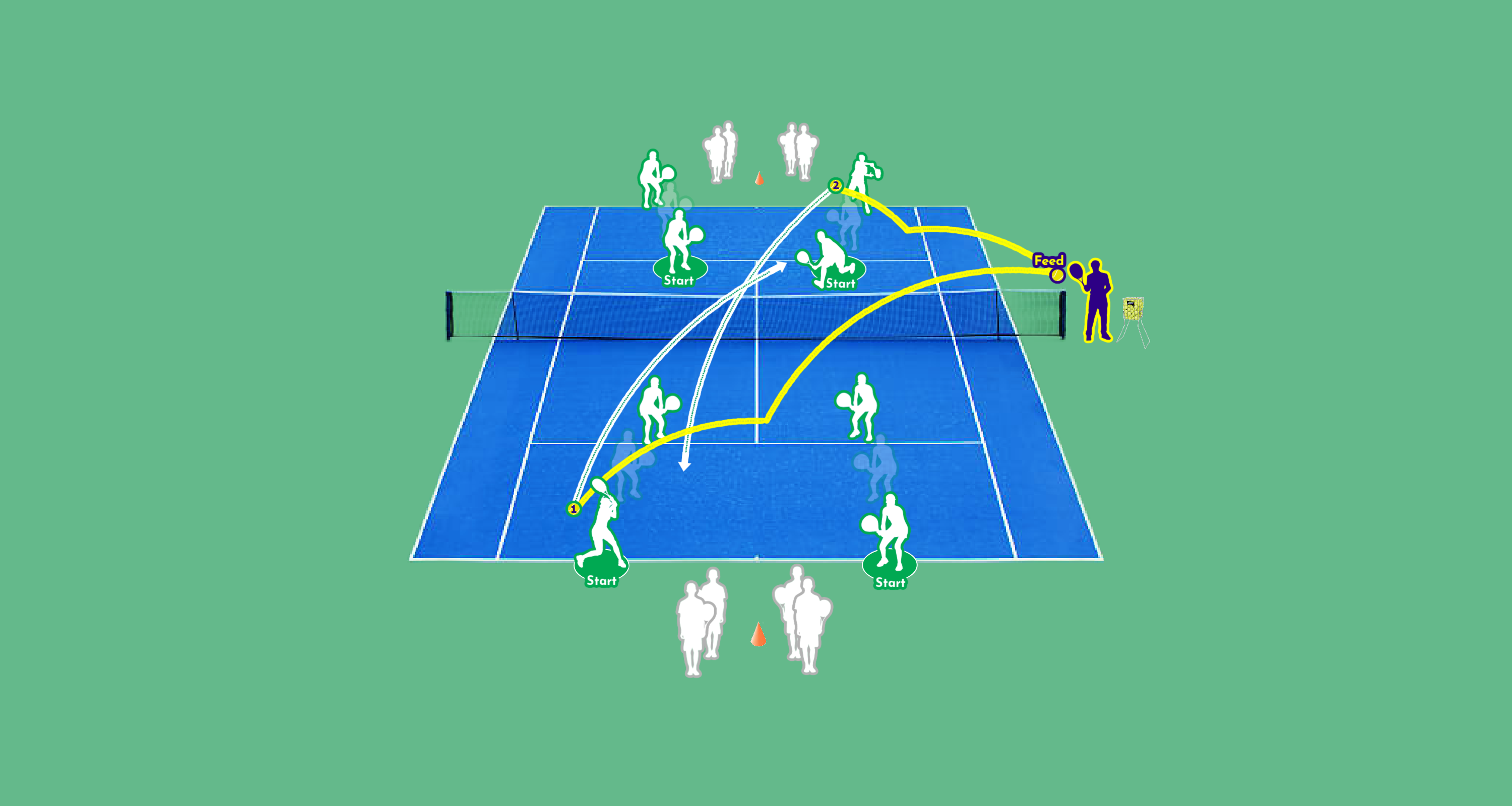
9. Tennis Baseball
Explanation
Set Up: One player will be in at the baseline. Additional players wait for their turn to replace a baseline doubles team or singles player who misses. Players waiting must be in a single file line behind a cone near the back fences.
Play Description: The coach feeds to the player that is in, which will then start the game. If that player makes the shot, they are "safe" and go to the end of the line. But if they miss, they are "out", and must put their racket down and go to the other side of the net to try to catch the balls hit by the remaining players. If they catch a ball midair, which can be helped by the coach popping up a ball coming across, they grab their racket again and get back in line. Whoever hit the ball that was caught is "out", and must put their racket down and go to the other side of the net to try to "field" balls. The last person remaining to hit a ball safely into the court without it being caught, wins the game.
Please Remember: Safety is our first concern. Always have players waiting to play behind a cone or at a safe distance from any danger. The pace of the game will be determined by the level or the number of players. If the level is low, the overall pace should be slower, allowing the players to keep up and receive more coaching feedback.
Levels: Pee Wee level through Intermediate player
Minimum Number of Players Per Court: 4
Maximum Number of Players Per Court: 10
Minimum Number of Courts: 1
Feed Style: Racket Fed or Hand Fed (for lower level players)
Variations
- Freeze for balance and proper technique after each shot
- Controlled pace (ball is hit at 70%)
- Focus on single shot (all slice, forehands, backhands, etc.)
- Depth (every ball must clear the service line)
- No doubles alleys
- Control and catch ball using only racket (for higher level players)
- Players hit from service line (for lower level players)
- Mini Tennis (for lower level players)
How to Start
Please see below to learn how to set up and start this game...
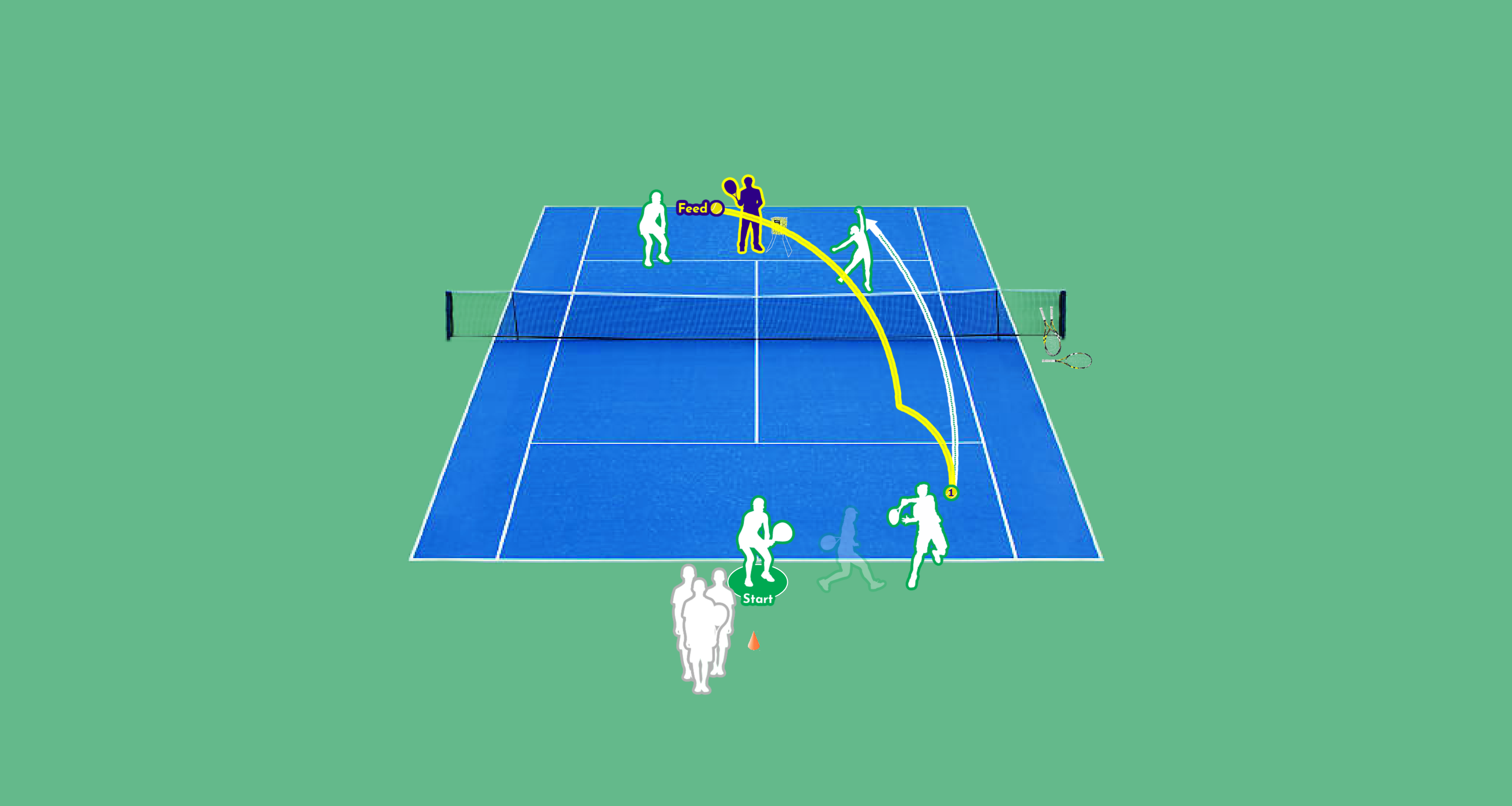
10. King of the Hill
Explanation
Set Up: The court should be divided in half with four players playing two singles points on one court at the same time. Two players will start on each baseline to face off. This set up should be on multiple courts, if possible.
Play Description: The coach may roam around and coach different players as the points are being played. Each half court game will be played up to 11 points (or any predetermined total). Once a game is won, all other games end as well. The highest scoring player in each game will move up to the next half court, and the losing player will move down to a lower half court for the next round. If a game is tied when time is called, a sudden death point will determine the winner.
Please Remember: Safety is our first concern. Always have players waiting to play behind a cone or at a safe distance from any danger. The pace of the game will be determined by the level or the number of players. If the level is low, the overall pace should be slower, allowing the players to keep up and receive more coaching feedback.
Levels: Advanced beginner through tournament player
Minimum Number of Players Per Court: 4
Maximum Number of Players Per Court: 10
Minimum Number of Courts: 2
Feed Style: Self Fed
Variations
- Freeze for balance and proper technique after each shot
- Consistency (ball must cross a certain amount of times before point starts)
- Controlled pace (ball is hit at 70%)
- Cross court
- Points won by volley or winner worth two points
- Focus on single shot (all slice, forehands, backhands, etc.)
- Depth (every ball must clear the service line)
- No doubles alleys
- Start every point with a serve
- Attack short balls (any ball that lands short must be hit and followed to the net)
- Dropshot starts the point
- "Swiss Cheese (Volley Drill)" style
- Lobster style (all players start point touching net as player drops ball over the net)
- Up and Back style (one player at net, other at baseline, then switch)
- Mini Tennis (for lower level players)
- Use real tennis scoring (for low level players to learn)
How to Start
Please see below to learn how to set up and start this game...

11. Royalty
Explanation
Set Up: Four players are set up to play a doubles point. Additional players wait for their turn to replace the "Peasant". Players waiting must be in a single file line behind a cone near the back fence.
Play Description: Four players are in with each taking one of four designated sections of the court. Each section has a different amount of errors allowed in them. The "King/Queen" section allows that player four errors until they are out. The "Prince/Princess" section allows three errors. The "Knight" section allows two errors, and the "Peasant" section allows only one error before that player is out. The coach always feeds to the "Peasant" to start the point. If any player in any section reaches their error limit, they will be out. The person going out will be replaced by the player in the immediate lower section. If the peasant misses, they are replaced by the first person in line. Once the new player takes the new section, their error total drops to zero. The winner is the player who finishes in the "King/Queen" section when the game ends.
Please Remember: Safety is our first concern. Always have players waiting to play behind a cone or at a safe distance from any danger. The pace of the game will be determined by the level or the number of players. If the level is low, the overall pace should be slower, allowing the players to keep up and receive more coaching feedback.
Levels: Advanced beginner through tournament player
Minimum Number of Players Per Court: 4
Maximum Number of Players Per Court: 10
Minimum Number of Courts: 1
Feed Style: Racket Fed or Hand Fed (for lower level players)
Variations
- Freeze for balance and proper technique after each shot
- Consistency (ball must cross a certain amount of times before point starts)
- Controlled pace (ball is hit at 70%)
- Patterns (one side goes crosscourt, other goes down the line)
- Points won by volley or winner worth two points
- Focus on single shot (all slice, forehands, backhands, etc.)
- Depth (every ball must clear the service line)
- No doubles alleys
- Doubles formation
- Start every point with a serve
- Attack short balls (any ball that lands short must be hit and followed to the net)
- Dropshot starts the point (either coach feeds it or first player hits it)
- "Swiss Cheese (Volley Drill)" style
- Lobster style (all players start point touching net as coach feeds a lob)
- Mini Tennis (for lower level players)
- Use real tennis scoring (for low level players to learn)
How to Start
Please see below to learn how to set up and start this game...
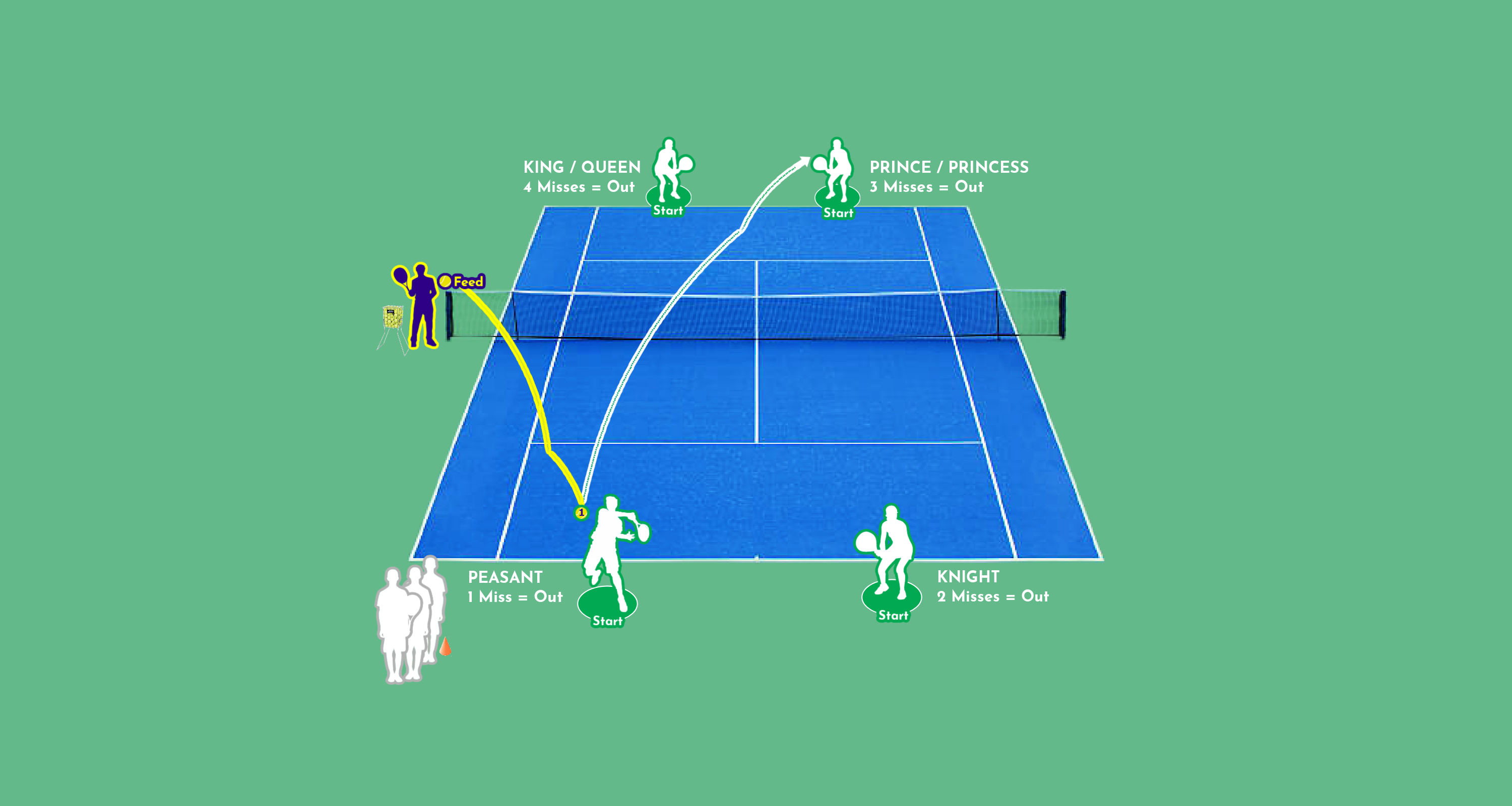
12. Lobster
Explanation
Set Up: All four players start by touching their rackets to the net before the point starts. Additional players wait for their turn to replace a player who misses. Players waiting must be in a single file line behind a cone near the net post.
Play Description: The coach may feed a lob over the head of any player that is in, which will then start the point. After the point is completed, the player that misses gets in line as another replaces them. Players add onto their individual score total with every point they win. The first player to reach 15 points (or any predetermined total), wins.
Please Remember: Safety is our first concern. Always have players waiting to play behind a cone or at a safe distance from any danger. The pace of the game will be determined by the level or the number of players. If the level is low, the overall pace should be slower, allowing the players to keep up and receive more coaching feedback.
Levels: Intermediate through tournament player
Minimum Number of Players Per Court: 4
Maximum Number of Players Per Court: 10
Minimum Number of Courts: 1
Feed Style: Racket Fed or Hand Fed (for lower level players)
Variations
- Freeze for balance and proper technique after each shot
- Consistency (ball must cross a certain amount of times before point starts)
- Controlled pace (ball is hit at 70%)
- Patterns (one side goes crosscourt, other goes down the line)
- Points won by volley or winner worth two points
- Focus on single shot (all slice, forehands, backhands, etc.)
- Depth (every ball must clear the service line)
- No doubles alleys
- Side vs. side scoring
How to Start
Please see below to learn how to set up and start this game...
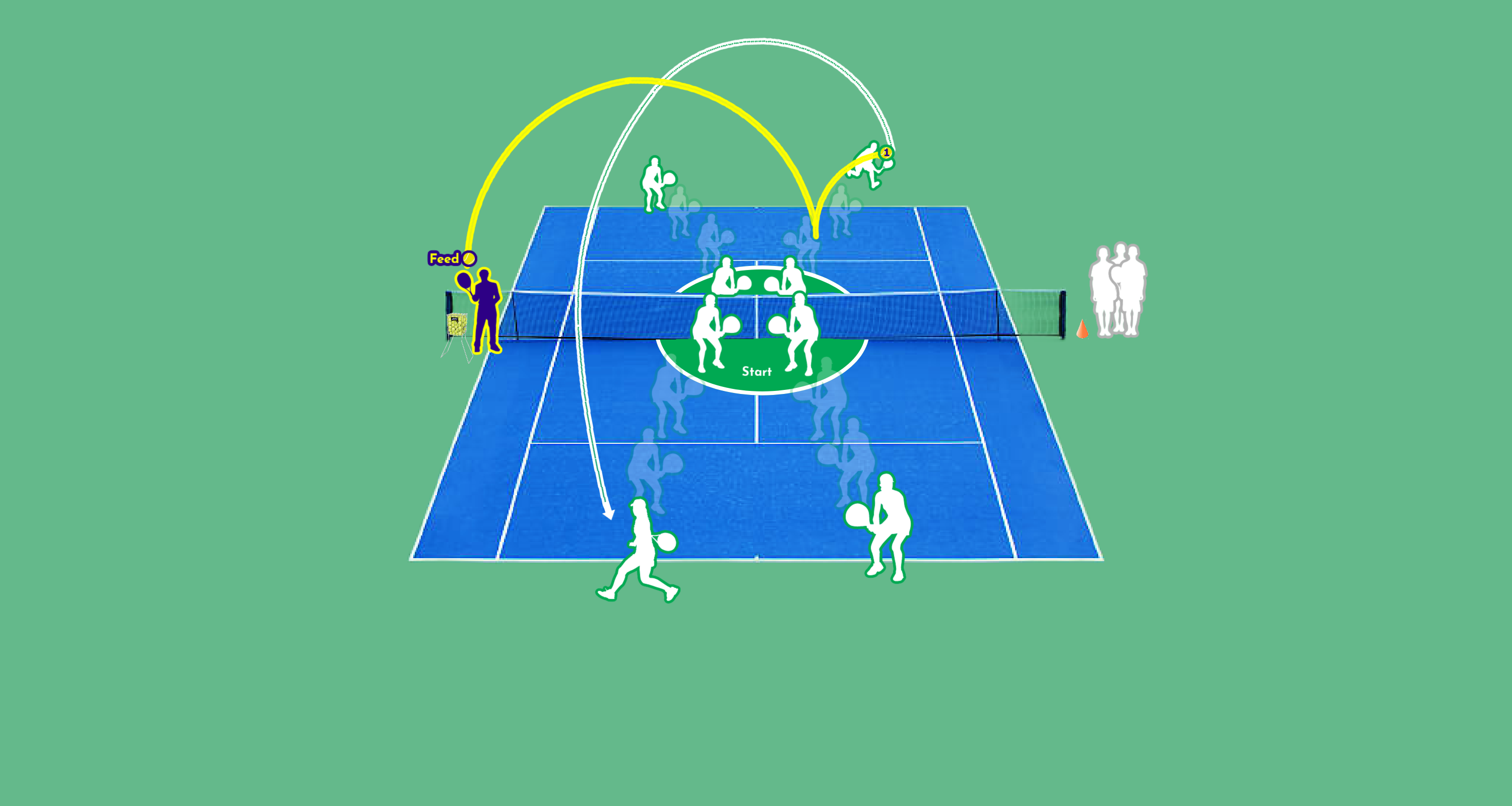
13. Beat the Coach
Explanation
Set Up: One doubles team or singles player will be at baseline. Additional teams or singles players wait for their turn to replace a baseline doubles team or singles player who misses. Players waiting must be in a single file line behind a cone near the back fences.
Play Description: The coach feeds to the doubles team or singles player that is in, and they play out a point. If that team or player wins the point, they add it on to their total. After the point, win or lose, that team or player gets back in line, and a new team or player come in to challenge the coach. The first team or singles player to reach 7 points (or any predetermined total), wins.
Please Remember: Safety is our first concern. Always have players waiting to play behind a cone or at a safe distance from any danger. The pace of the game will be determined by the level or the number of players. If the level is low, the overall pace should be slower, allowing the players to keep up and receive more coaching feedback.
Levels: Advanced beginning through tournament player
Minimum Number of Players Per Court: 4
Maximum Number of Players Per Court: 10
Minimum Number of Courts: 1
Feed Style: Racket Fed or Hand Fed (for lower level players)
Variations
- Freeze for balance and proper technique after each shot
- Consistency Rallies (ball must cross a certain amount of times before point starts)
- Controlled pace (ball is hit at 70%)
- Patterns (one side goes crosscourt, other goes down the line)
- Points won by volley or winner worth two points
- Focus on single shot (all slice, forehands, backhands, etc.)
- Depth (every ball must clear the service line)
- No doubles alleys
- Doubles formation
- Start every point with a serve
- Attack short balls (any ball that lands short must be hit and followed to the net)
- Dropshot starts the point (either coach feeds it or first player hits it)
- "Swiss Cheese (Volley Drill)" style
- Lobster style (all players start point touching net as coach feeds a lob)
- Mini Tennis (for lower level players)
- Use real tennis scoring (for low level players to learn)
How to Start
Please see below to learn how to set up and start this game...
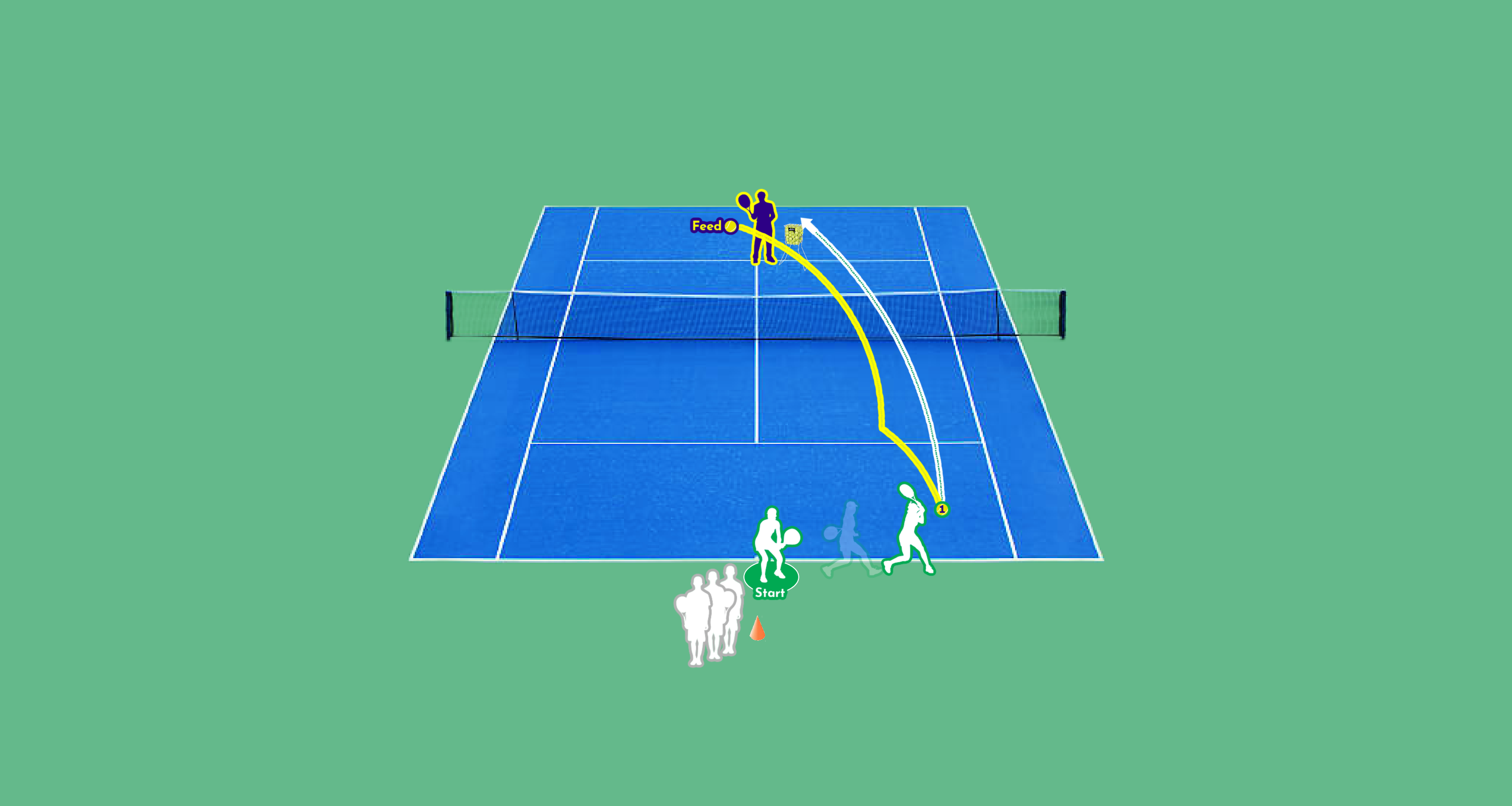
NON-COMPETITIVE
Tiny Ace Games (Ages 3-5)
Follow the Leader
All students follow the coach around half court copying what coach does.
Swing Away
Coach tosses ball up as one student swings until they make contact or until ball rolls.
Ball Bounce
Students try to bounce a ball or balloon up in the air or down on the ground with their rackets.
Walk the Dog
With their rackets, students roll ball on ground along line or through coned obstacle course.
Catch the Bugs
With cones or racket, students trap ball rolled to them by coach.
Jump the Ball
Coach rolls the ball to student at various speeds as student jumps over the ball.
Catch 'n Throw
Coach softly bounces ball to student. After student catches or traps ball they then throw it over the net.
Dodgeball
Balls are softly tossed toward students as they try to avoid getting touched by the balls.
Line Tag
Students and coaches play tag while staying on the white lines of the court, including across the net.
Tennis Tag
Coaches and/or students chase and tag each other as they balance ball or balloon on their racket strings.
Volley Wall
Students line up (spread out for safety) across net with their rackets up. Coaches softly toss or hit the ball to students as they try to volley it with their rackets.
Baseline Shuffle
Student shuffles across baseline as coach softly rolls 3 balls (one at a time) toward student. Student shuffles to ball and lets it roll through their legs.
Tennis Golf
Ball is placed on the ground. Student swings and hits ball toward coned targets at net.
Pass Along
Students (standing at cone) are spread out around the half court. One student must use racquet to move ball or balloon to next student. Once it is passed, the next student moves it to the next student and so on until last ball, or balloon, is passed back to the original student.
Tennis Relay Race
At least two teams are formed to compete in a standard relay race. The only difference is the ball, or balloon is the baton and students must either carry, or bounce it with their racket over to their teammate on each pass.
Popcorn
Coach feeds entire basket of balls by softly popping them into the air. Students run around and try to catch as many as possible.
Overhead Smash
Students line up (spread out for safety) across net with their rackets resting on their shoulder with the strings up. Coach tosses floater as student smashes it down.
Target Catch
Students stand across from each other with a racket on the ground in between them. They toss the ball back and forth trying to land the ball on the racket strings.
Obstacle Course
Coach sets up obstacle course along the court using cones, balls, basket, bag, etc. Students make their way through course balancing ball or balloon on racket.
Mini Royalty
Each student is in a service box with a line of kids waiting to come in. Each service box has a designated rank and is allowed a certain amount of misses: 1. King/Queen (4 misses) 2. Prince/Princess (3 misses) 3. Knight (2 misses) 4. Peasant (1 miss). As one student runs out of misses, the next student moves up to next section. Students only has to make contact to count.
